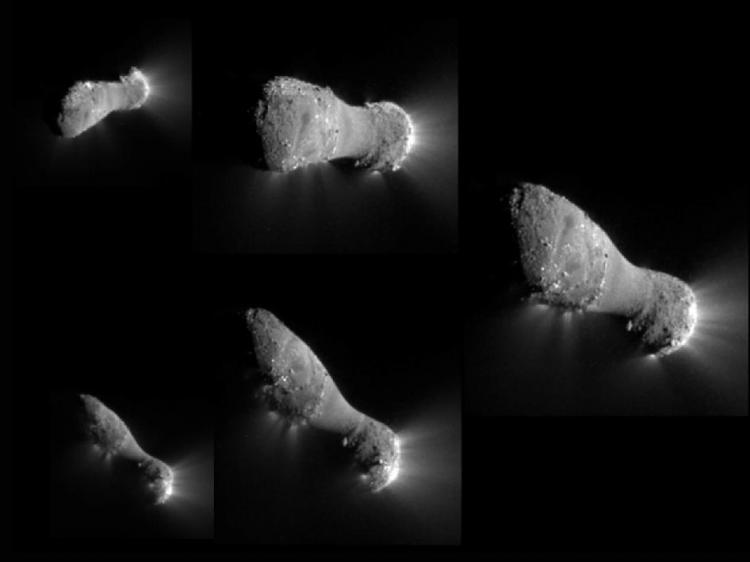Did comets deliver a significant portion of the Earth's oceans millions of years after the Earth formed? Some new evidence in Nature lends weight to the idea.
Using HiFi, the Heterodyne Instrument for the Infrared on the Hershel Space Observatory, researchers found that the ice on a comet called Hartley 2 has the same chemical composition as our oceans. Both have similar D/H ratios - the proportion of deuterium, or heavy hydrogen, in the water. A deuterium atom is a hydrogen with an extra neutron in its nucleus. This was the first time ocean-like water was detected in a comet.
"Life would not exist on Earth without liquid water, and so the questions of how and when the oceans got here is a fundamental one," said University of Michigan astronomy professor and HiFi co-investigatorTed Bergin, "It's a big puzzle and these new findings are an important piece."

Comet Harley 2 close-up shots. (NASA/JPL-Caltech/UMD)
Six other comets HiFi measured in recent years had a much different D/H ratio than our oceans, meaning similar comets could not have been responsible for more than 10 percent of Earth's water.
The astronomers hypothesize that Hartley 2 was born in a different part of the solar system than the other six. Hartley most likely formed in the Kuiper belt, which starts near Pluto at about 30 times farther from the sun than the Earth is. The other six hail from the Oort Cloud more than 5,000 times farther out.
The source of earth's oceans has been a subject for debate among astronomers for decades. Until now, asteroids were thought to have provided most of the water. Now, however, Herschel has shown that at least one comet does have ocean-like water.
"The results show that the amount of material out there that could have contributed to Earth's oceans is perhaps larger than we thought," Bergin said.






Comments